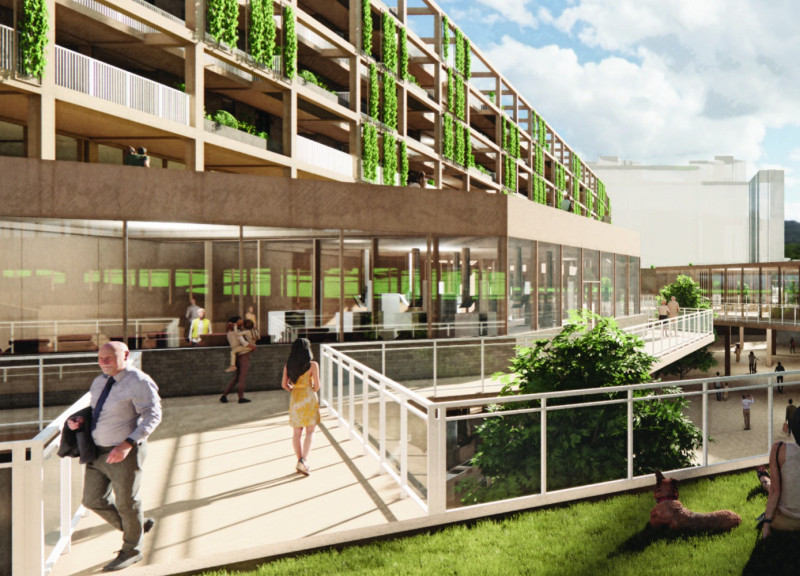5 key facts about this project
This project represents a forward-thinking approach to urban architecture, reflecting a strong commitment to sustainability and community engagement. It functions as a hub for [specific activities, such as social gatherings, academic pursuits, or commercial ventures], providing a versatile environment that adapts to varying uses while maintaining its core identity. The architects have made a deliberate choice to focus on creating spaces that foster interaction and collaboration, aligning the building's use with the broader goals of connectivity within the community.
Key architectural elements of the project include a dynamic façade that employs a mixture of materials, enhancing both visual appeal and structural performance. The use of glass panels not only allows for ample natural light but also establishes a connection between indoor spaces and the outdoor environment. This transparency creates a welcoming atmosphere, inviting users to engage with the building and its surroundings. Complementing these glass elements are areas of carefully crafted masonry and wood, which lend warmth and texture while reinforcing the project’s commitment to using locally sourced materials.
Inside, the layout is designed to promote a natural flow between areas, making it easy for occupants to navigate through the various spaces. Open-plan spaces are interspersed with more intimate settings, allowing for a range of activities—from casual meetings to large community events. The careful placement of windows facilitates cross-ventilation and ensures that all rooms benefit from daylight, leading to an energy-efficient design that respects both ecological and aesthetic principles.
Unusual design approaches characterize this project, particularly in its treatment of outdoor spaces. Landscaped areas feature native plant species that not only enhance the site’s ecological functionality but also reduce maintenance requirements. Furthermore, the project includes outdoor gathering spaces that encourage social interaction, demonstrating a strong understanding of how architecture can aid community-building efforts. The integration of water features, such as fountains or ponds, adds a tranquil quality, creating an inviting atmosphere for both visitors and residents.
Noteworthy is the building’s responsiveness to climate conditions, achieved through the deployment of advanced technologies that regulate temperature and light effectively. By incorporating smart systems for energy management, the architecture minimizes its carbon footprint while remaining user-friendly and efficient. This intelligent approach ensures that the design meets contemporary expectations for sustainability without compromising on comfort or usability.
The architectural details, such as the innovative roof design and the use of overhangs, further reflect a deep consideration for the local climate. These elements work to shield the interiors from harsh sunlight while allowing for unobstructed views of the surroundings. Each choice made in the design process speaks to a broader philosophy of creating spaces that are not only functional but that also resonate with the people who use them daily.
In summary, this architectural project exemplifies how thoughtful design can result in a building that serves its community while maintaining a strong visual identity. By focusing on sustainability, user experience, and ecological integration, the design stands as a testament to the possibilities of modern architecture. Readers interested in delving deeper into this project should explore architectural plans, architectural sections, and architectural designs to fully appreciate the nuanced ideas that have been woven into this impressive endeavor.


 Woo Seok Choi,
Woo Seok Choi,  Joung Been Bae
Joung Been Bae 























